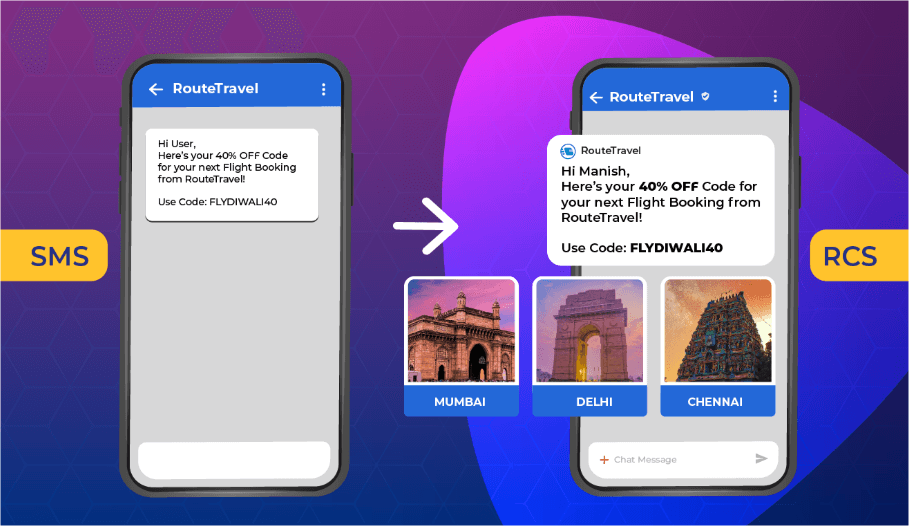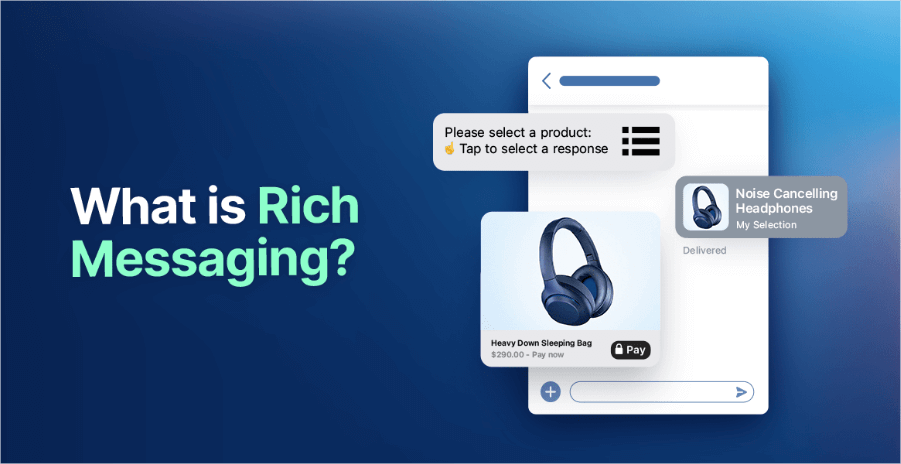📑 Table of Contents
Rich messaging blends traditional SMS with interactive elements. It includes images, carousels, video previews, and tappable buttons. Unlike plain text, it delivers immersive experiences.
Think of it as texting—upgraded. Customers don’t just read a message. They engage with it. And because people respond better to visuals and interactivity, rich messaging stands out.
Rich messaging bridges the gap between messaging and app-like experiences. It gives brands the ability to deliver personalized, contextual, and media-rich content in real time.
Why Customers Prefer Rich Messaging
Today’s customers expect more. They’re used to apps, stories, and swipes. So, plain SMS feels limited. Rich messaging meets modern expectations.
In one message, a customer can see a product, click to buy, or start a chat. No app download needed. Everything happens inside the message. As a result, engagement soars.
Consumers are also more likely to remember messages that include visuals. Interactive elements increase comprehension and lead to quicker decision-making. It’s no surprise that brands adopting rich messaging see lower bounce rates and longer customer interactions.
The Business Benefits of Rich Messaging
Businesses also win big. Here’s why rich messaging is changing the game:
- Higher engagement rates: Visuals grab attention faster.
- Better conversion rates: Tappable buttons simplify next steps.
- Fewer support calls: Customers can access info directly.
- Stronger brand presence: Logos and colors create consistency.
- Better analytics: Track who clicked what and when.
It also helps reduce friction. Instead of redirecting users to external sites, it keeps them inside the conversation. That means fewer clicks, faster responses, and higher satisfaction.
Moreover, rich messaging supports conversational commerce. Brands can create guided journeys that lead users through discovery, selection, and purchase—all within the chat window.
Use Cases Across Industries

Rich messaging works across many sectors. Let’s look at a few examples:
- Retail: Show a product gallery with a “Buy Now” button. Suggest related items or sizes. Include customer reviews or flash sale timers.
- Healthcare: Send appointment reminders with reschedule links. Include digital intake forms or post-visit follow-ups with satisfaction surveys.
- Travel: Include booking confirmations with maps and check-in options. Share flight delays, gate changes, or loyalty program updates.
- Finance: Offer card activation via secure buttons and ID verification tools. Notify users of suspicious transactions with real-time response options.
- Events: Share tickets, venue maps, and last-minute updates in one interactive message. Allow attendees to add events to their calendar or get directions with a tap.
Each use case makes the experience smoother and faster for the customer.
Rich Messaging Platforms to Know
To send rich messages, you’ll need the right platform. Popular options include:
- RCS (Rich Communication Services): Designed for Android users. Delivers advanced messaging features without needing an app.
- Apple Business Chat: Lets iOS users interact directly from Messages. Great for service requests and product questions.
- WhatsApp Business API: Supports images, buttons, and real-time replies. Well-suited for global markets and customer service.
- Facebook Messenger: Great for bots and interactive commerce. Offers flow builders and third-party integrations.
Some platforms also offer AI and automation. This allows businesses to personalize messages based on customer behavior or purchase history.
Challenges to Consider
While rich messaging is powerful, it’s not without hurdles.
- Device compatibility: Not all phones support RCS or advanced formats.
- Carrier support: Some features rely on network infrastructure.
- Privacy rules: GDPR and TCPA still apply. Consent is key.
- Setup complexity: It may take time to design and test experiences.
Additionally, messaging fees may vary depending on region, format, and platform. Brands should consider this when scaling campaigns globally.
Still, the long-term payoff often outweighs the initial setup. Companies that invest now will be well-positioned for the future.
The Future of Customer Engagement
Customer communication is evolving quickly. People want instant, personalized, and visually engaging experiences. Rich messaging delivers that.
As more carriers adopt RCS and platforms improve integration, adoption will accelerate. AI and automation will make messages even smarter.
Imagine a world where every customer message includes video previews, in-message transactions, and smart replies. That future is already forming.
Rich messaging will likely converge with AI, voice interfaces, and customer data platforms. This will create an ecosystem of responsive, hyper-personalized communication at scale.
Soon, rich messaging won’t be a nice-to-have. It’ll be expected.

Final Thoughts
Rich messaging isn’t just a trend—it’s a shift in how brands and customers interact. With visuals, buttons, and real-time actions, you create moments that matter.
It empowers marketers, reduces friction, and creates memorable experiences. Customers feel seen, supported, and in control.
Now is the time to embrace this evolution. Because when communication gets richer, so does customer engagement.
